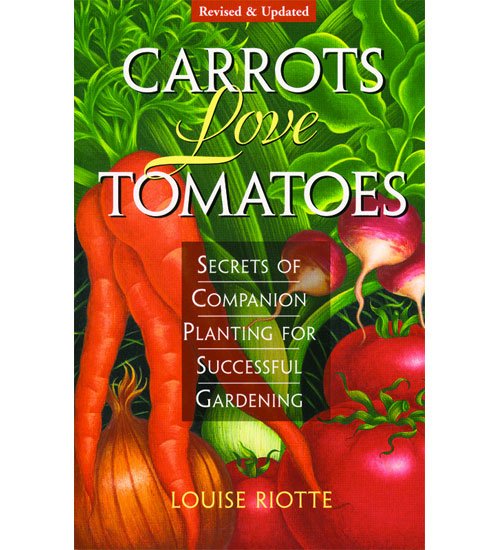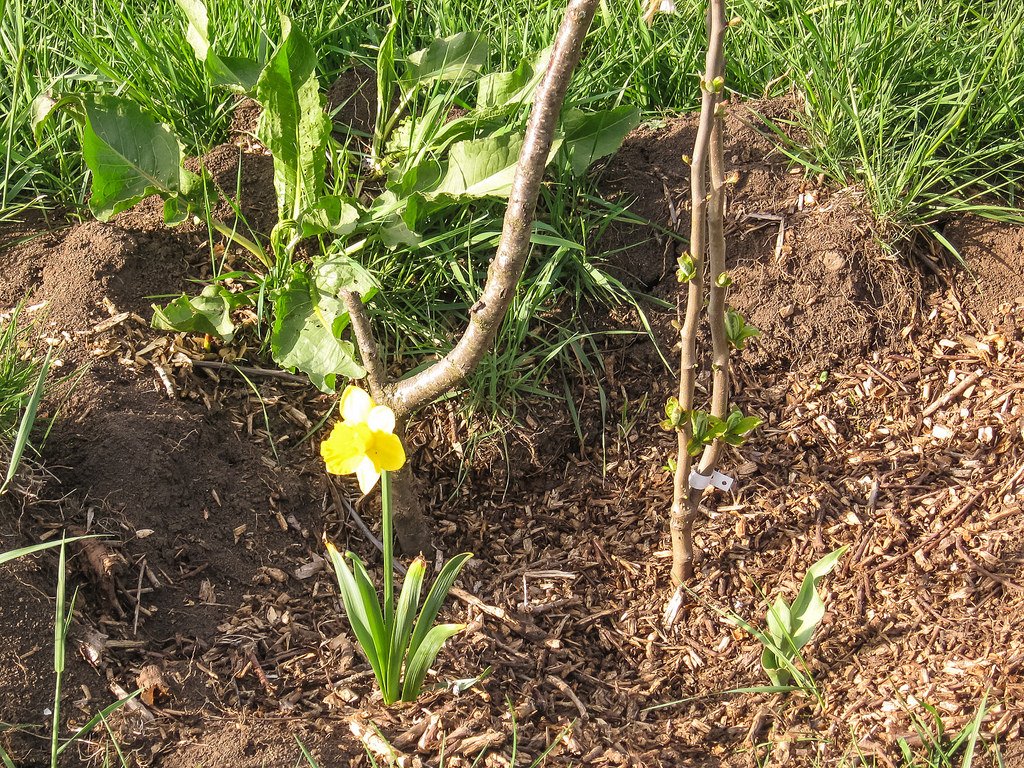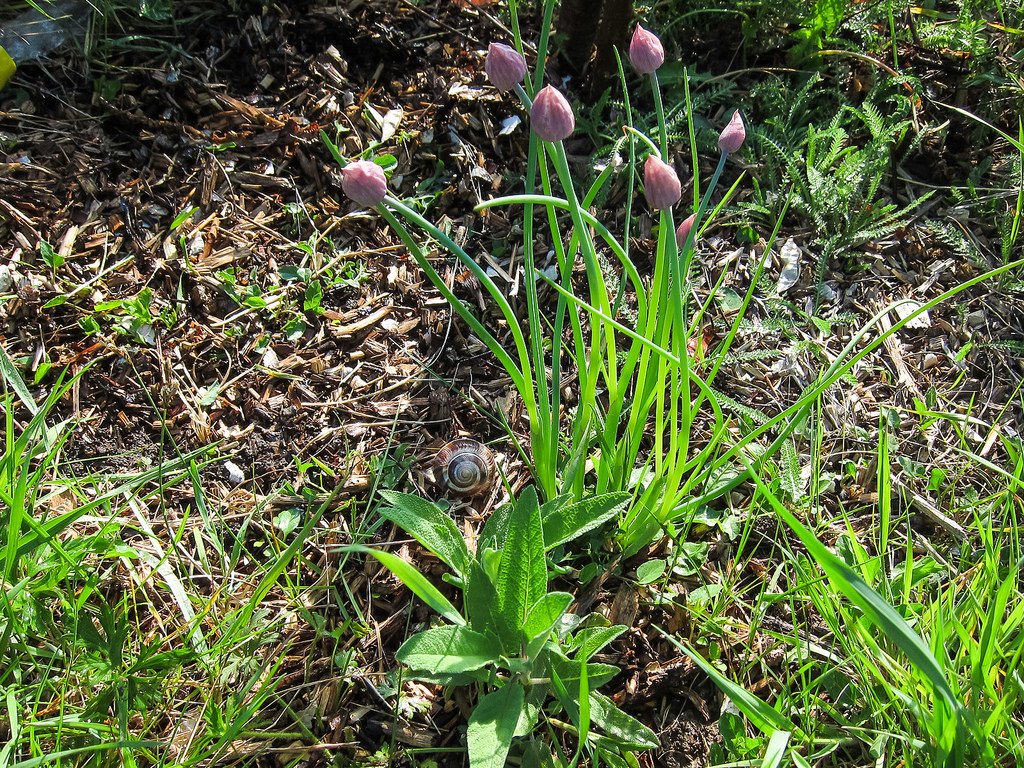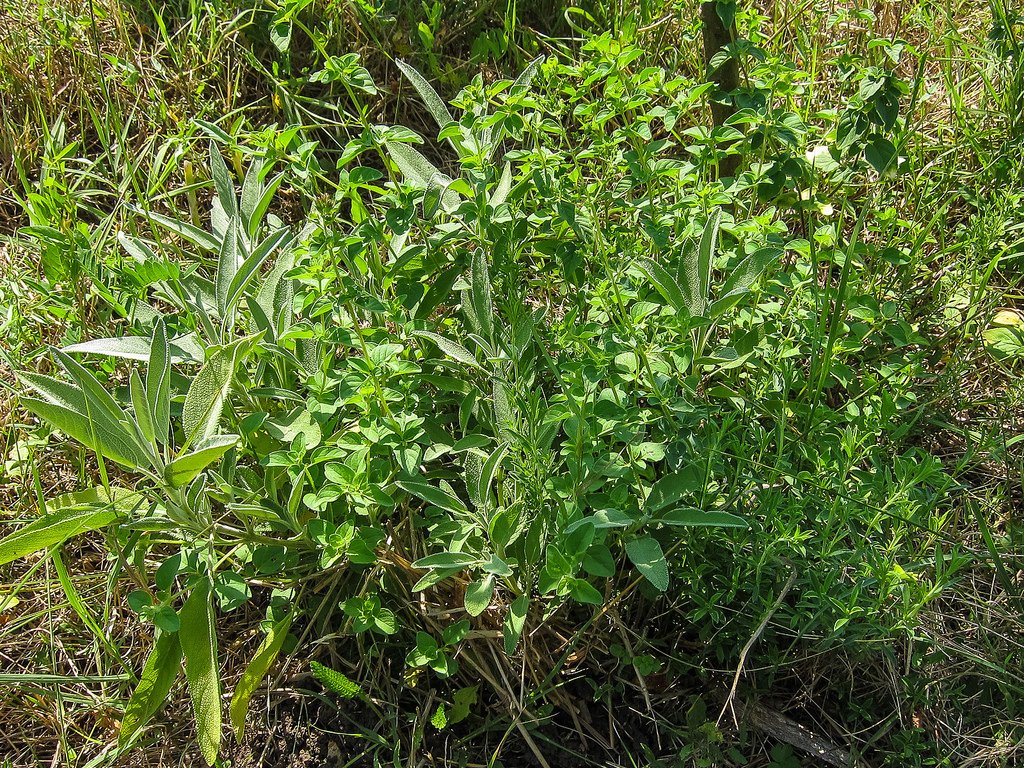A nice subtitle for that post would be "How to get plenty of herbs while weeding, without much planning or effort." :)
Continuing in the theme of my previous easy-to-do no-frills posts (rooting cuttings, growing asparagus, tending the wild), I want to talk a bit about plant guilds, as permaculture calls them and more specifically - fruit tree guilds.
What is a guild?
In permaculture gardening circles and reading material, there's much talk about plants that help each other. Even a beginner's guide, like the late Toby Hemenway's Gaia's Garden has a whole section dedicated to "compaion plants", as they're often called. And there's even a whole book on that topic, Carrots love tomatoes! The reasoning behind this is certain plants can benefit others by providing a specific function.

For example, a plant can attract pollinators with its lush flowers and thus benefit a host of other nearby plants what won't be as attractive. Or maybe a specific compound that a plant exudes deters a certain pest which attacks a nearby plant. Maybe it's nitrogen fixing species, or a tap rooted plant that won't compete with shallow rooted neighbors, but will bring to the surface otherwise unavailable nutrients. There are plenty of examples.
Fruit free guilds in particular rest upon the belief that aromatic perennial herbs (those rich in essential oils) are beneficial for the orchard. You'll find plenty of that in books, videos and articles online.
In the last decade, the Internet overflowed with charts of relationships between plants. What to plant where, which plants to combines, what purported benefits would that bring and so on. Browsing a simple Pinterest album with a few hundred of those can make your head spin!
(Edit: a fellow steemian homesteader posted a nice chart of companion plants just in time! Thank you!)
To make things worse, there are plenty of people that oppose the concept of companion planting, citing lack of scientific research to back those theories up. So even while considering should you do plant guilds or not, you can be easily dissuaded.
I don't really have the time or ambition to plan everything to the last plant and lay it out in perfect harmony. It is my belief that Nature achieves what we perceive as harmony by creating a self-regulating chaos. Nor do I find the lack of research disheartening, as the plant communities in nature really resemble plant guilds, with different layers of (usually) non-competing plants.
So what did we do?
We planted our new orchard on a chilly late autumn day 3 years ago - 20-something fruit trees (actually 1 & 2 year old whips). During the winter months, we selected several perennial herbs which we found useful and would grow without much (or any) care. We ordered seeds, as that's the quickest and cheapest way to get many plants established.
In late spring, we planted a 50-slot seed tray of each herb, putting 2-3 seeds in each slot. We prefer deep trays, as those allow for a better root development. Alternatively, a large slotted tray could be used.

The trays were kept in the garden, no need for plastic covering or special arrangements or care. Watering was done by our kids, a garden hose with misting attachment, once a week. The baby plants grew nicely all summer, but we moved them in mixed shade in late July just to keep them from drying out too quickly.
In late autumn, we pulled 1 or 2 plants of each variety and planted them along the base of our baby fruit trees. Each tree received 4-6 different herbs in a random mix. The trees were previously mulched with a few inches of woodchips, but that's not a problem - just dig through the mulch with a small garden trowel, making a large enough hole for the plug you pulled from the tray.
We also added a few spring flower bulbs along with the herbs - those were gifted by a neighbor. Finally, we encouraged some native deep rooted plants to grow, like dock, chicory, dandelions, for chop and dropping. Come next spring, the bulbs were flowering and the guilds started establishing. A daffodil in flower, with a tulip coming along and a large dock plant in the background.

A month or so later, chives formed seed heads, sage grew and yarrow put out new leaves (seen in the background).

In the height of summer, the herbs grew vigorously and almost surrounded the base of the tree - barely visible off-center to the right. The chives was cut to the ground, but sage, oregano and mountain savory have exploded!

In winter, a solitary yarrow flower stem remains, all other herbs deeply covered by the snow.

Benefits
Here are some of the benefits in our case:
We don't need a special herb bed in the vegetable garden, so we're left with more space for annual vegetables. Either way, perennial herbs don't really mix well with annual vegetables, if you plan on even the slightest cultivation.
We're using "wasted space" around the trees, that otherwise would have to be either mulched regularly (we don't have the material at hand and we shy away from needless inputs) or hand dug and weeded (we don't have the time or the will to do it even on an yearly basis).
The trees don't really need weeding, as Bermuda grass and other "weeds" cannot get a good hold in a niche that's so tightly packed. Weeding the trees is usually cutting the herbs for drying, chop and dropping the rest and pulling a stray weed root or two. So harvesting is weeding in the same time. Neat!
If and when we water the trees, we're also watering the herbs. One chore less!
Diversification! A complicated word to denote not putting all your eggs in a single basket! Right now, we have 20+ herbal "beds", one for each tree. And each guild has slightly different composition of plants. So while some may fail, others will surely thrive, as we've already witnessed. Also, this randomness adds interesting accents in the garden for us, the kids and guests and visitors. "Oh, and what do you have growing here? What is that purple flower over there?"
Freedom to act, change, improve, when and if you're ready. Adding a new member in the guild is easy - pull out some of what grows currently, just enough to make some space and put in the new plant! No remorse about uprooting some oregano, when you have it growing on 10 other locations! Also, the plants you pulled out can be planted elsewhere - in the wild for example, or gifted to a friend. Even removing a whole guild is not a problem if you have many of those. You can even start with a single plant around a single tree and improve the diversity step by step, over the years.
Which herbs did we plant?
In the next post I'll talk a bit about the easiest and most useful herbs propagation we've come across, but for now I'll leave you with a list of the herbs we established in our orchard:
- Oregano (Origanum Vulgare + var. Hirtum, know as Greek oregano)
- Sage (Salvia officinalis)
- Mountain savory (Satureja montana)
- Spearmint (Mentha spicata)
- Peppermint (Mentha × piperita)
- Chives (Allium schoenoprasum)
- Garlic chives (Allium tuberosum)
- Yarrow (Achillea millefolium)
- Comfrey (Symphytum officinale)
- Borage (Borago officinalis)
- Anise Hyssop (Agastache foeniculum)
- Garden Thyme (Thymus vulgaris)
All those are grown from seeds and the only non-perennial of those is the borage and it manages to self seed so far. That's less then 10 USD worth of seeds to create 20+ mixed guilds. And we still have some of the seeds left + we've collected plenty from our own plants, now flowering each summer. Also, we've managed to sell tens of baby plants we pulled from the guilds, so the initial investment is now covered many times over. And most of those in the list make a great herbal tea as well, as they're famous medicinal plants!
Let me know in the comments if you have any questions - as always, I'll do my best to help!
